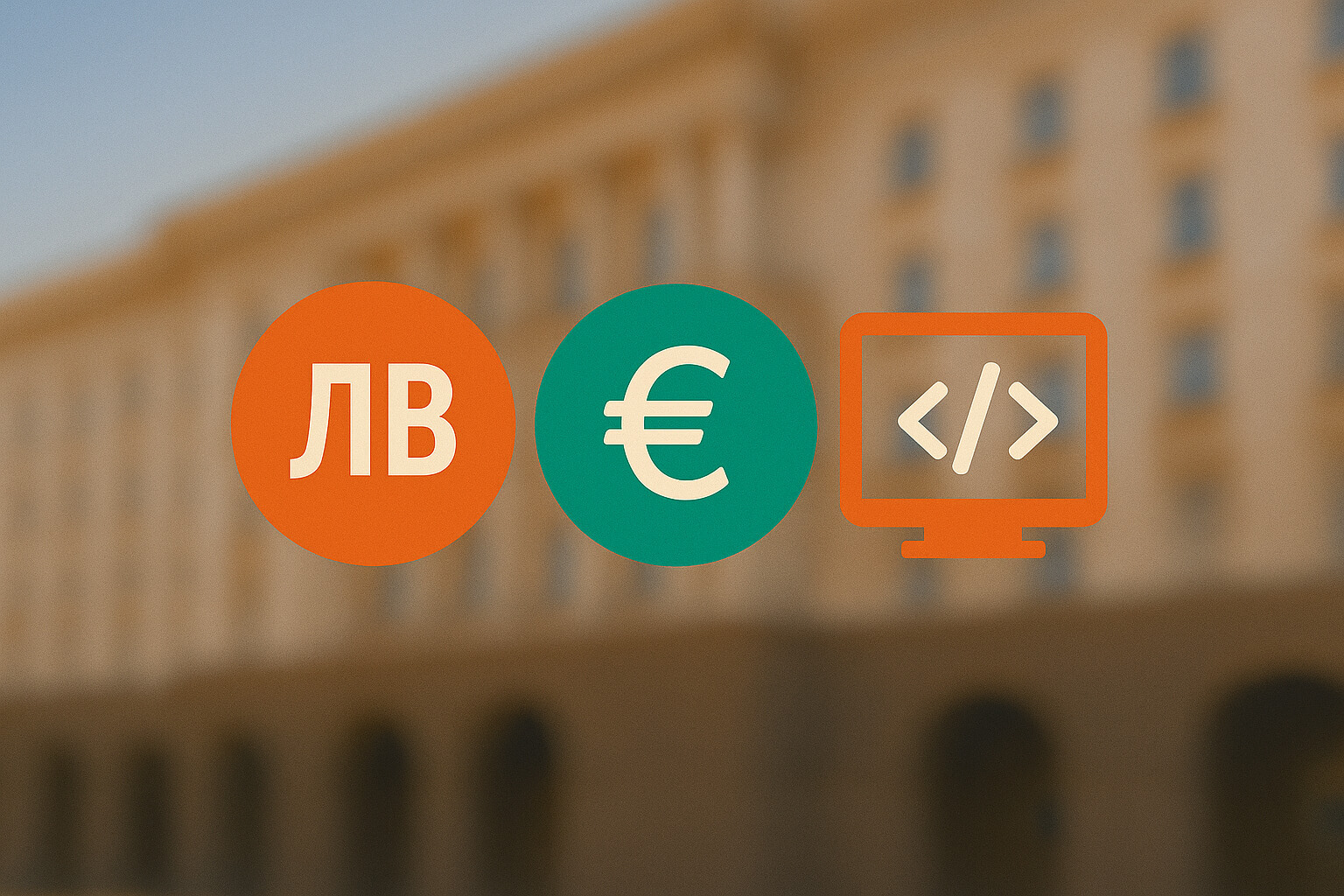Articles

How the transition to the euro affects us in online and software products
As someone who works daily with online projects and digital products, I see the upcoming transition to the euro not just as an administrative change, but as a real test of the flexibility of our systems and of our fairness to our clients.
What does a “price adjustment” mean for software and digital products?
We’re not just talking about price tags in a store – this is about:
-
Pricing in platforms and websites – your SaaS, e‑commerce store, or marketplace must automatically display prices both in euros and in leva.
-
Internal databases and APIs – currency fields must be adapted, with an accurate conversion algorithm at the fixed rate of 1.95583.
-
Subscription systems – if your product is subscription-based, you must adjust amounts in a way that doesn’t harm the client.
-
Digital licenses and services – their price must also be displayed in both currencies, without rounding up or down arbitrarily, but strictly according to the established mathematical method.
Key deadlines we cannot afford to miss
| Event | Deadline |
|---|---|
| Start of mandatory dual display | 8 October 2025 |
| Adoption of the euro as legal tender | 1 January 2026 |
| End of dual display period | 8 August 2026 |
Do not wait until the last moment. Testing systems, reviewing design, and adjusting backend logic takes time.
What are the requirements?
- Fixed rate: €1 = 1.95583 BGN – this must be visible on your website.
- Dual display: every price must be shown in both leva and euros.
- Exact rounding algorithms: mathematically, to the second decimal place.
- Transparency: promotions, discounts, and invoices must also be in both currencies.
- Technical readiness: online cash registers, order management software, ERP systems – all must support the new regime.
What are the possible fines and risks?
- Fine for lack of dual display: from 200 to 3,000 BGN for each violation found.
- Fine for incorrect rate or rounding: penalties from the Consumer Protection Commission, including possible temporary suspension of your online store.
- Reputational risk: clients watch carefully to see if you’re “rounding up” during the transition. One mistake can lead to lost trust.
- Technical risk: unprepared systems may show incorrect prices or break subscription plans – meaning lost revenue.
How to prepare technically?
- Software updates: implement automatic scripts to convert and display both currencies.
- QA testing: check how your system calculates prices under different scenarios – vouchers, promotions, partial payments.
- ERP and accounting: synchronize currencies across software modules and accounting systems to avoid discrepancies.
- UX review: the customer must clearly see how the euro price is calculated without confusion.
- Documentation: prepare internal guidelines for your teams so they know how to enter and adjust prices.
Planning from the client’s perspective
In fact, this transition is a great opportunity not only for technical adjustments but also for strategic planning.
- Are you sure your current software is reliable enough?
- What if your current provider doesn’t respond in time or doesn’t offer the features you need?
Many businesses are already using this transition to:
- Switch to a more serious provider that guarantees updates, support, and timely response.
- Upgrade their current platform with new functionalities – automation, better ERP integration, easier product management.
- Optimize costs – if you’re making changes anyway, it’s more cost-effective to add new features now than to pay twice later.
The environment is uncertain, and customers expect stability. This is the perfect time to ask yourself:
- Will you invest in better, more reliable software that will serve you for years?
- Will you look for a partner who thinks strategically for you, not just meets the bare minimum requirements?
About the author
I’m Ivelin Ivanov, managing director of the software company Wollow, an economist by education with over 17 years of experience in IT business management. I’ve worked with hundreds of clients and, together with my team, actively develop more than 15 SaaS solutions in various fields. Every day I see how good planning and the right choice of technology can save money, time, and unnecessary risks – and that’s exactly why I’m sharing this advice.

